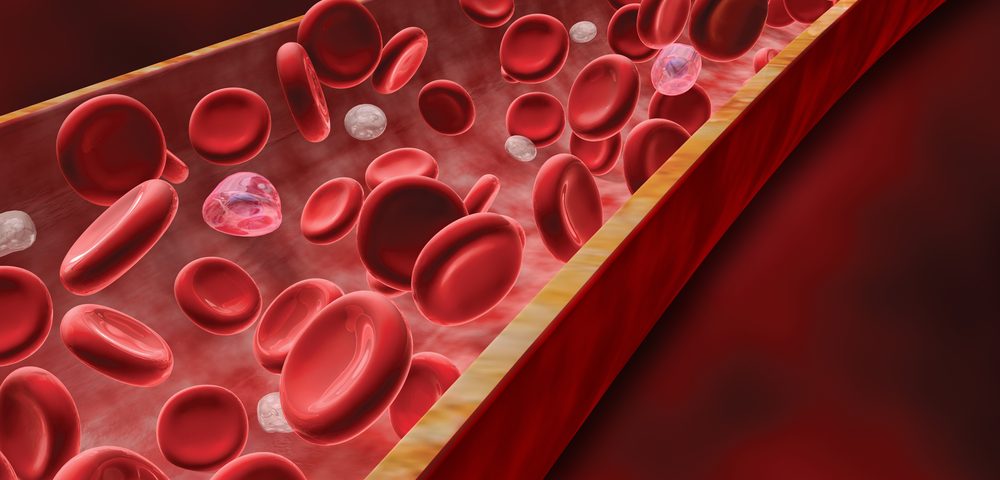Two proteins linked to inflammation and oxidative stress are deregulated in blood samples of fibromyalgia (FM) patients compared with healthy controls, according to findings from a large-scale protein analysis.
Specifically, the levels of these two proteins, called haptoglobin and fibrinogen, which respond to inflammation, were found to be increased in fibromyalgia patients and may work as biomarkers for a faster and more timely diagnosis, the researchers suggest.
The study, “Insight into the biological pathways underlying fibromyalgia by a proteomic approach,” was published in the Journal of Proteomics.
The underlying cause of fibromyalgia, a disease characterized by widespread muscle pain and fatigue, remains unknown; however, several factors are known to contribute to the condition.
Among these factors, inflammation and oxidative stress are the most frequently reported. Oxidative stress is caused by an imbalance between the body’s production of potentially harmful reactive oxygen species and its ability to contain them.
The complexity of factors contributing to fibromyalgia represent an added difficulty to treatment and even diagnosis of the disease — it can take up to five years for patients to be diagnosed.
This highlights the need to find good markers that may assist in identifying fibromyalgia in a more timely manner so that appropriate treatments are administered promptly.
In this study, researchers used a technique called proteomics to identify and measure potential changes in proteins in the blood of fibromyalgia patients. This approach allows researchers to screen all proteins present on a large scale in a given sample.
This “may help to gain insight into the biological pathways potentially related to the FM process and to set a common protein signature in order to improve the diagnosis and management of this syndrome,” they wrote.
The study enrolled 12 women with fibromyalgia and 12 age-matched healthy women as controls. Fibromyalgia’s impact on patients’ quality of life was assessed via a questionnaire.
Additionally, researchers evaluated patients’ muscular pain, and mental and physical health – not surprisingly, both parameters were worse in fibromyalgia patients than in controls.
The blood samples used for the proteomics analysis were retrieved from both groups in the early morning after an overnight fast to avoid fluctuations that can occur throughout the day.
The proteomics analysis identified a total of 266 proteins, of which 33 were different between fibromyalgia patients and controls: 25 proteins were significantly increased, and eight had lower levels in fibromyalgia patients versus controls.
The major signaling pathways altered in fibromyalgia patients included acute-phase response signaling, coagulation, and complement systems. Additionally, differences were detected in liver-X receptor/retinoid-X receptor activation (LXR/RXR) and farnesoid-X receptor/retinoid-X receptor activation (FXR/RXR) pathways.
The acute-phase response is composed of blood proteins primarily synthesized by the liver in response to inflammation, and is a key part of the so-called innate immune system.
The haptoglobin and fibrinogen proteins, which belong to this signaling pathway, were particularly elevated in fibromyalgia patients relative to controls.
Haptoglobin also has antioxidant activity, and according to the researchers, its increase exclusively in the fibromyalgia group may help “counteract excessive oxidative stress preventing, among others, muscle atrophy.”
During inflammation, the complement and coagulation systems are also know to play key roles, and members of both pathways were increased in fibromyalgia patients’ blood samples.
The other pathways found deregulated in fibromyalgia included the family of receptors in the LXR/RXR and FXR/RXR pathways. These receptors are involved in several processes, but have been reported to exert an anti-inflammatory action.
“The anti-inflammatory activity of both pathways suggests that the activation of LXR and FXR pathways could attempt to alleviate the inflammatory environment” detected in FM patients, the researchers wrote.
“Our results support the existence of a plasma protein signature of FM that involves different biological pathways all of them related to inflammation, and point to haptoglobin and fibrinogen as plausible biomarker-candidates for future studies,” they concluded.

